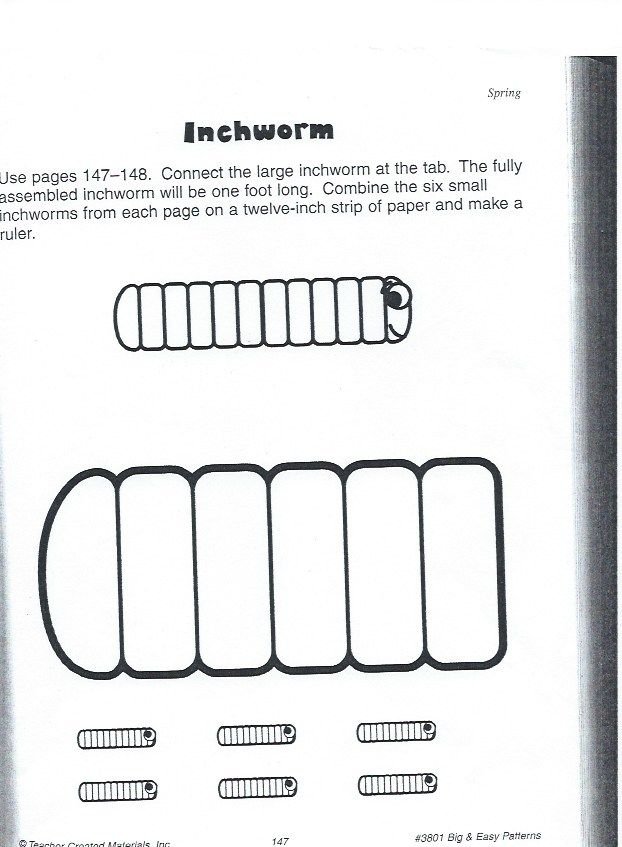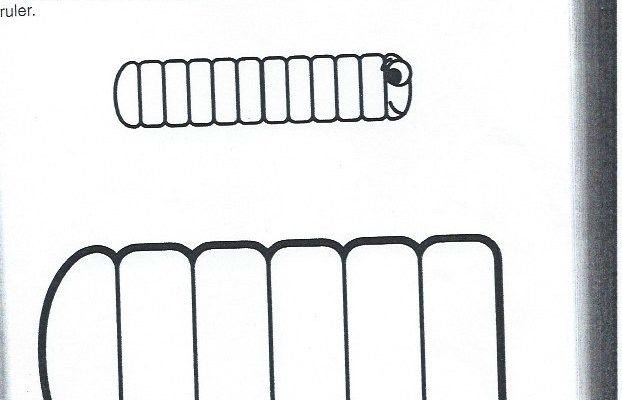
Documenting inchworm behavior for science projects can be a fun and educational experience, connecting you to nature while honing your observation skills. Think about it like being a scientist for a day—watching, recording, and learning about how these creatures live and move. Plus, it’s a fantastic way to impress your classmates with some cool findings!
So, grab your notebook and let’s explore how to effectively document inchworm behavior for your next big project.
Understanding Inchworms: The Basics
Inchworms are actually the larvae of certain moth species, often belonging to the Geometridae family. They come in various colors and patterns, but they all share that classic inching movement. To really get into documenting their behavior, it’s essential to know a bit about their life cycle and natural habitat.
Most inchworms are found in gardens, forests, or anywhere with plenty of leaves. They love to munch on foliage, and their movements help them blend into the environment, protecting them from predators. When you’re observing them, pay special attention to these behaviors: feeding, resting, and moving from one location to another. You might find yourself captivated by how they dodge danger and navigate their leafy terrain.
You might be wondering why this is important. Understanding their behavior not only helps you document them accurately but also gives insight into how they survive and adapt to their surroundings. It’s like peeking into a tiny world of nature!
Gathering Supplies for Observation
Before you dive into documenting inchworm behavior, you’ll need to gather some supplies. Here’s a quick list to get you started:
- Notebook: This will be your main tool for recording observations.
- Pencil or Pen: You want something that’ll last through outdoor conditions.
- Camera or Smartphone: A great way to capture images for reference.
- Field Guide: A book or app to help you identify different types of inchworms.
- Container: A small habitat for closer observation, if needed (but always be kind and release them afterward).
Having these supplies on hand lets you focus on the inchworms without running around trying to find what you need. Honestly, it makes the whole process smoother and more enjoyable. Plus, a smartphone can be really handy for documenting any unique technologies, like how they pair with their environment.
Choosing the Right Observation Site
Next, you’ll want to pick an ideal spot for your observations. Look for areas with plenty of vegetation—like parks, gardens, or wooded areas. You might think, “Why does the location matter?” Well, different inchworm species may thrive in particular environments, so your site choice can affect what behaviors you observe.
When you arrive at your chosen spot, take a few minutes to get a feel for the surroundings. Look for leaves with noticeable munching marks; that’s a telltale sign that inchworms are nearby. It’s also important to consider the time of day. Morning or late afternoon is usually the best time for observing these little guys since they’re more active.
Don’t forget to bring your supplies! Being prepared makes the experience more rewarding. Plus, it allows you to grab opportunities for observation as they arise, whether you’re noticing a unique movement or documenting a quirky habit!
Documenting Behavior: What to Look For
Now comes the fun part—observing inchworms in action! Start by watching how they move. As they inch forward, they often curl and stretch in a way that can seem almost like a dance. Here are some specific behaviors to document:
1. Movement Patterns: Note how they navigate obstacles. Do they go around leaves, climb them, or just curl and drop?
2. Feeding Habits: Observe what plants they prefer. Are they munching on tender leaves or going for tougher ones?
3. Resting Positions: Inchworms often curl up when resting. Take note of how long they stay still and if they change locations.
4. Interactions: If you see multiple inchworms, document how they interact. Do they avoid each other, or is there any social behavior?
Each observation adds to your understanding of their life. Take your time, and remember that patience is key. The more details you document, the richer your project will become!
Recording Your Findings
While observing inchworm behavior, it’s crucial to record your findings effectively. This doesn’t mean just jotting down observations; you should aim for clarity and detail. Consider organizing your notes into sections based on the behaviors you’re documenting.
For example, you might create headings like “Movement Patterns” and “Feeding Habits” in your notebook. Under each heading, write down specific notes, including sketches if you’re artistically inclined. This helps you visualize what you’re observing, making it easier to write about later.
Using a camera can also enhance your documentation. Snap pictures of inchworms in action, resting, or feeding. This visual evidence can be a powerful addition to your project. And remember, if something doesn’t go according to plan—like a blurry photo—don’t stress! Just keep looking and recording.
Presenting Your Project
When it’s time to put your findings together, think about how you can make your project engaging! Start with an introduction that summarizes what you observed, followed by detailed sections on movement, feeding, and resting behaviors.
Using visuals is key—include your best photos alongside your notes. Not only does this bring your project to life, but it also helps others understand your observations. Additionally, consider using graphs or charts to represent data, like how many different inchworm species you observed or the types of plants they fed on.
Don’t hesitate to share stories about your experience, too. Maybe you had a moment when an inchworm surprised you with its quick moves! Personal anecdotes make your project relatable and engaging for your audience.
Why Documenting Inchworm Behavior Matters
Finally, let’s talk about why documenting inchworm behavior is more than just a science project. It helps you connect with nature and develop skills that go beyond just observing insects. You’ll learn about data collection, critical thinking, and presenting your findings—all valuable skills in any scientific field.
Plus, sharing your findings can inspire others to appreciate these tiny creatures. You might even spark interest in entomology (the study of insects) among your friends or classmates. It’s amazing how a little documentation can open doors to bigger conversations about our environment and the critters that inhabit it.
In conclusion, taking the time to observe and document inchworm behavior can be a delightful and educational experience. You’re not only gathering data for a school project but also engaging with the natural world in a meaningful way. So, get out there, have fun, and enjoy the wonderful world of inchworms!

